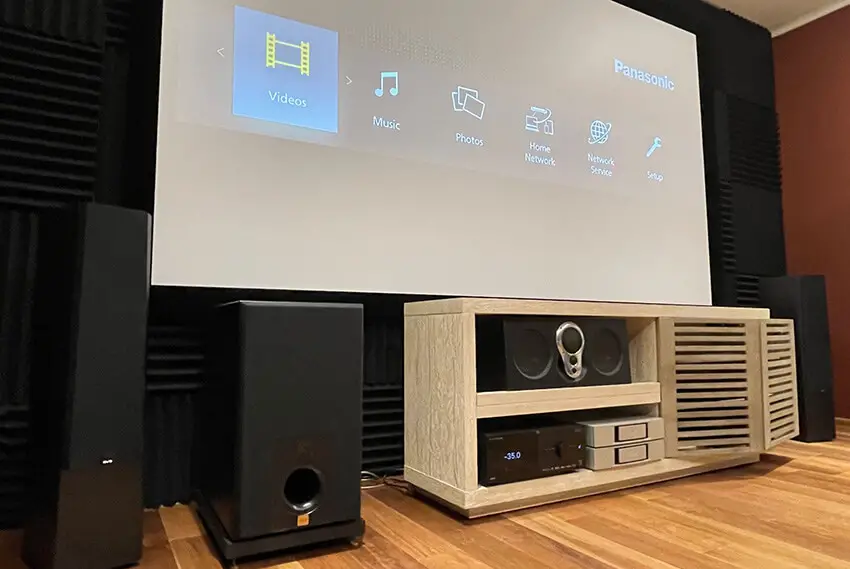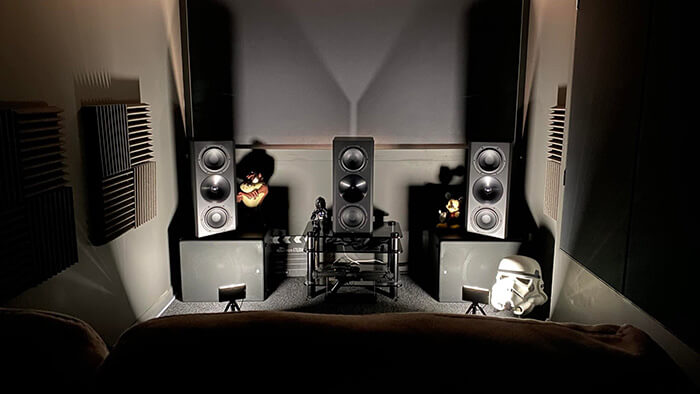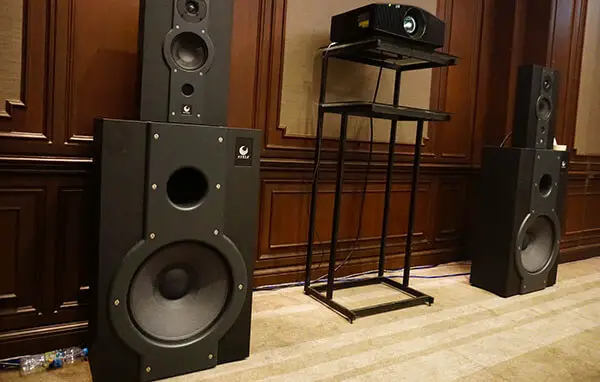Planning to set up your home stereo system for the first time and can’t decide between 3-way and 4-way speakers?
Well, although both of these configurations have their own features, perks and drawbacks, both strive hard to serve the same purpose – to give you the best sound quality possible.
Understanding the key differences between 3-way and 4-way speakers will help you make the right decision based on your audio preferences and usage scenarios.
Keep reading for an extensive guide on how these speakers work and which one you should go for.
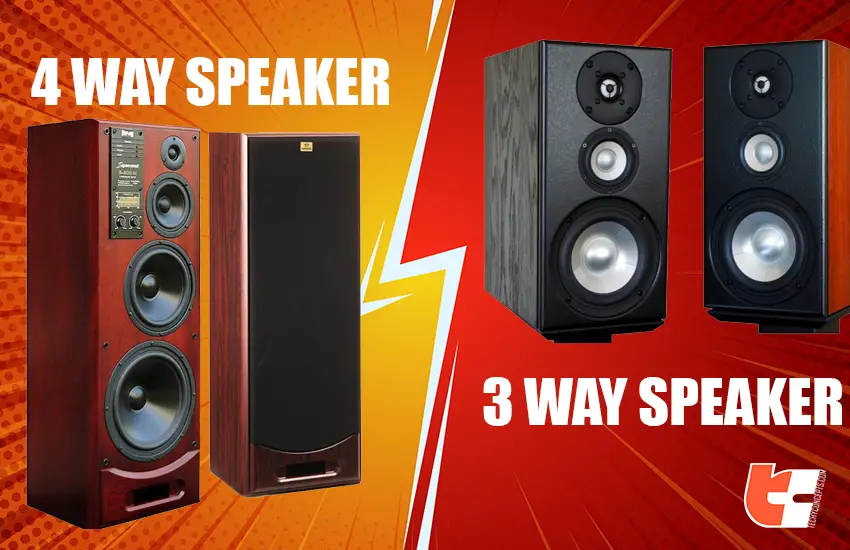
Basic Overview of Speaker Design:
Before we dive into comparing both the speaker types, it would be better if we briefly discuss the common design and layout of most speakers today. All speakers include at least two drivers: a woofer which deals with low frequencies and a tweeter that deals with high frequencies.
These drivers work together to cover a wide sound spectrum. As speaker technology evolved over the years, the concept of multi-way speakers emerged to address the challenge of accurately reproducing the entire frequency range. Now, we have 3-way and 4-way speakers that have more drivers than usual.
What is a 3-Way Speaker?
3-way speakers, also known as triaxial speakers, include three distinct driver units: a woofer, a tweeter and a mid-range driver. The distribution of frequencies is divided amongst these three drivers – each focusing on its designated range.
The woofer is responsible for the lows while the mid-range driver tackles the mids, and the tweeter works with the high frequencies. Such equal work distribution results in a more balanced and accurate sound reproduction.
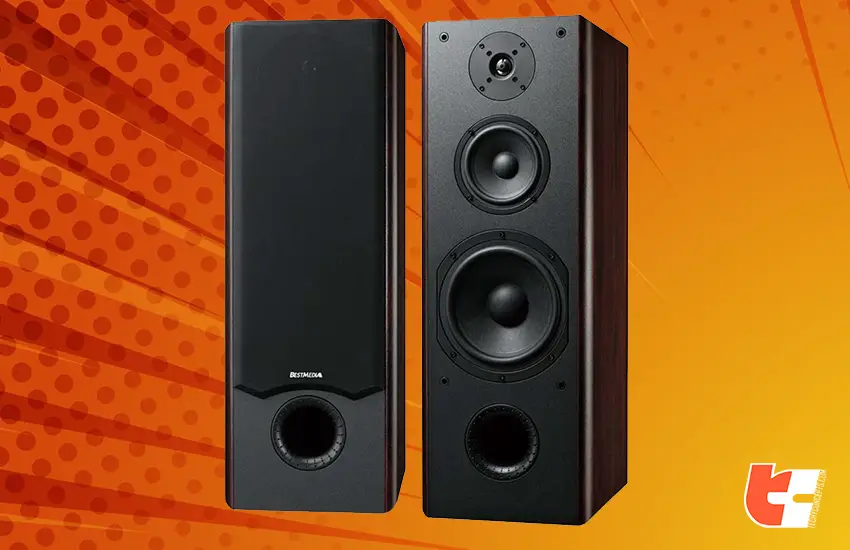
Advantages of 3-Way Speakers:
Apart from giving audience a balanced sound performance, 3-way speakers offer some other benefits too, such as:
1. Improved Mid-Range Clarity
Because 3-way speakers have a dedicated mid-range driver (unlike 2-way speakers), you’ll get to enjoy improved clarity and better sonic details in the mid-frequency region when streaming your favorite music. Vocalists who use instruments such as guitars, will benefit a lot from this feature.
2. Reduced Distortion
If your song has loud hard-hitting bass, when you increase the volume to its peak, you may face sound distortions. However, because the frequency spectrum is nicely divided among three drivers in a 3-way speaker, each driver can solely focus on a specific range. This helps to decrease distortion and prevent driver overwork.
3. Wider Soundstage
Want to feel like you’re in a live concert but within the comfort of your home? You got it! The distribution of frequencies between three drivers can help to create a larger and more immersive soundstage, which improves the overall listening experience.
Some Disadvantages of Using 3-Way Speakers
Well, like we had mentioned earlier, there are certain aspects you may not like about three-way speakers.
Firstly, they have a crossover network to divide the audio signal between three different drivers. Designing and implementing an effective crossover can be tough. Incorrect tuning can result in phase and timing issues.
Moreover, because of three drivers, regularly maintaining and repairing can be very expensive and complicated. Especially if one of the drivers get damaged, you may have to repair the whole setup.
What Are 4-Way Speakers?
4-way speakers take the concept of multi-way speaker design a level higher by integrating one additional driver known as a super tweeter.
It also includes the three drivers present in 3-way speakers such as the woofer, mid-range driver, and tweeter.
Wondering what the super tweeter does in 4-way speakers? It’s basically responsible for handling ultra-high sound frequencies, thus covering a broader frequency range and adding more clarity.
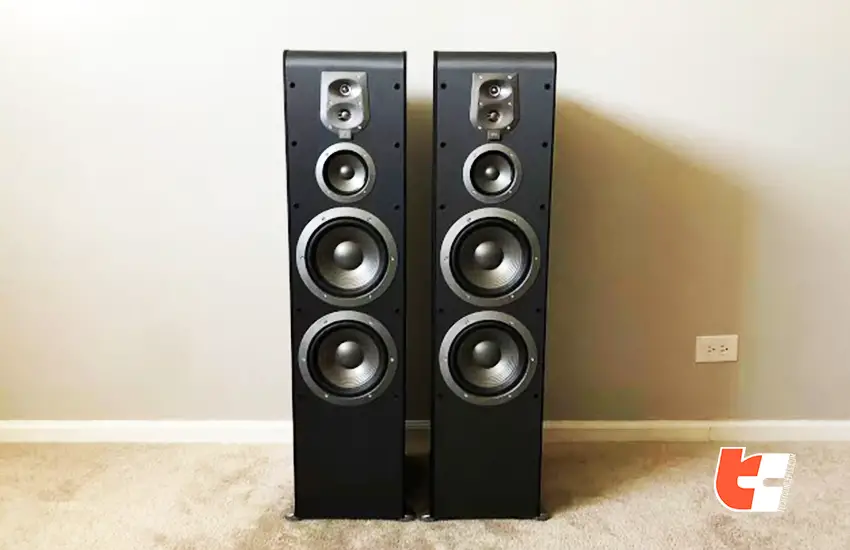
The Perks of Using 4-Way Speakers:
Here’s an overview of all the advantages you’ll get to enjoy if you buy a 4-way speaker:
1. Extended Frequency Range:
The addition of a super tweeter enables 4-way speakers to reproduce frequencies that are beyond the human hearing range. While these ultrasonic frequencies may not be experienced consciously, they can alter overall audio quality by interacting with audible frequencies.
2. Enhanced High-Frequency Detail
The super tweeter’s ultra-high frequency specialization means that even the most minor subtleties in high-frequency content are faithfully reproduced, leading to increased detail and clarity.
3. Greater Dispersion
Super tweeters frequently have a greater dispersion pattern, allowing them to spread sound across a larger region. This can help to provide a more immersive sound experience, particularly in bigger rooms.
Some Limitations of 4-Way Speakers:
Just like 3-way speakers, 4-way speakers too have their own complications.
To begin with, more drivers in a four-way system may require a more powerful amplifier that consumes more electricity to properly drive each driver. Therefore, the overall cost of your audio setup and the cost to run it will significantly increase. If you’re on a tight budget, a 4-way speaker will not be profitable for you.
Secondly, with more drivers covering various frequency ranges, the optimal listening position might be more specific, making the listening experience less consistent in different parts of the room.
Moreover, making four drivers work together seamlessly can be even more challenging than with three drivers. Getting that balanced and cohesive sound across the entire frequency range can be tough.
Lastly, four-way speakers are typically larger and bulkier than three-way designs. They will demand more space in your room and the entire audio setup may make your room look congested with limited space to walk around.
Choosing Between 3-Way and 4-Way Speakers:
The choice between 3-way and 4-way speakers ultimately depends on your audio preferences, listening environment, and the kind of music you generally play. Here are a few factors to consider when making a decision:

1. Listening Preferences
If you prioritize accuracy and clarity across all frequency ranges, especially in the mid-range, 3-way speakers may be the ideal choice. However, if you desire extended high-frequency reproduction and are focused on achieving the highest level of audio quality, 4-way speakers might be more suitable.
2. Room Size
Larger rooms can benefit from the wider dispersion pattern of 4-way speakers, which can help fill the space more effectively. On the other hand, 3-way speakers can also deliver impressive results in moderate-sized rooms.
3. Music Type
The type of music you typically enjoy can help make a decision. If you listen to music genres with intricate instrumentals and vocals, the mid-range clarity of 3-way speakers will be great for you. Likewise, If you often play audio with complex high-frequency elements, 4-way speakers might be more appealing.
4. Your Budget
It’s essential to consider your budget when choosing between 3-way and 4-way speakers. 4-way speakers tend to be more complex and are more expensive than 3-way speakers.
Our Final Verdict
Both 3-way and 4-way speakers offer distinct advantages that cater to different audio preferences and room setups. The decision between the two comes down to personal taste, listening habits, and budget considerations. While 3-way speakers provide balanced sound and improved mid-range clarity, 4-way speakers shine in delivering extended frequency ranges and improved high-frequency detail.
In the end, the “better” option depends on what you prioritize in your audio listening experience. Whichever you choose, both 3-way and 4-way speakers have the potential to level up your enjoyment of music and sound to new heights.
Frequently Asked Questions:
1. Which is better, 3-way or 4-way speakers?
Answer: It depends on your specific audio preferences and needs. 4-way speakers offer more distinct sound frequency ranges, whereas 3-way speakers are more affordable, provide a simpler setup and still deliver quality audio enough for a good home stereo system.
2. Do 4 way speakers have more bass?
Answer: Not necessarily. The number of “ways” in a speaker refers to its number of drivers inside that help to produce a variety of frequency ranges. While 4-way speakers can offer a wider range of frequencies, including mid-bass and midrange, the bass performance depends on the design and quality of the speakers, not just the number of drivers.
3. Do 3-way speakers sound better?
Answer: Again, not necessarily. The sound quality of speakers, whether 3-way or 4-way, depends on several factors such as the design, build quality, materials used, the sound settings and how well they compliment your audio preferences. Both types can deliver excellent sound if handled effectively.
4. What speaker size is best for bass?
Answer: Larger speakers have the ability to move more air, therefore they are likely to produce deeper bass. However, not just speaker size, some more factors influence the quality of bass production such as, build quality, material of speaker box, driver quality, size and power of amplifier etc.
